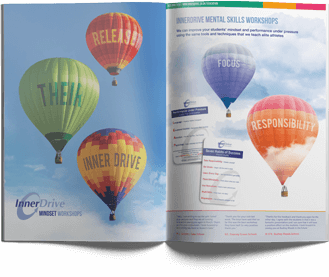Calvin Coolidge, the 30th President of the United States of America once noted that “nothing in this world can take the place of persistence. Talent will not: nothing is more common than unsuccessful men with talent. Genius will not; unrewarded genius is almost a proverb. Education will not: the world is full of educated derelicts. Persistence and determination alone are omnipotent”.
Whilst he might have been slightly over-egging the importance of resilience, the desire to help students improve these skills is probably more popular now than ever.
The Sutton Trust define this as a ‘positive adaptation despite the presence of risk’. In their report, ‘The impact of non-cognitive skills on outcome for young people’, they note that resilience and coping skills have high malleability (meaning that they can be improved and developed). Research has also demonstrated that setbacks are not always a bad thing, and that those who have experienced some adversity go on to perform better under pressure than those who have been wrapped in cotton wool. Experiencing failure has also been associated with higher levels of empathy, motivation and determination.
So, how can teachers and schools create an environment that helps develop resilient learners?
How Students Feel They Develop Resilience
A study published only a few months ago interviewed students to find out how they think they can develop resilience and what they think academic institutions can do to help. They found that the three consistent attributes that help make resilient learners were: keeping a sense of perspective, staying healthy and social support.
A sense of perspective was defined as the ability to manage ones emotions, concentrate on the things that you can control and that matter, and choosing the correct strategy for any given situation. Central to maintaining a sense of perspective was the importance of self-reflection, which allowed students to manage new or uncomfortable situations. Other skills that helped keep a sense of perspective included a mixture of both short-term and long term goals, as this helped maintain focus and motivation after a setback.
Being physically and mentally healthy helped students respond well under pressure and during adversity. Ways to do this included doing physical activity as well as taking part in team sports, which allowed for social interactions and self-reflection. Identifying and celebrating successes and adopting helpful and constructive self-talk helped improve mental well-being and resilience. Finally, social support and maintaining good relationships with friends, family and teachers helped students either feel better about their setbacks or provided suggestions on how to overcome them.
Finally, the study found that academic institutions could help students develop resilience by helping them experience and learn from failures in a safe environment, providing high quality feedback that focuses on strategies and next steps, as well as providing access to extra-curricular activities.
A recent overview by leading resilience researchers highlights that for an environment to facilitate resilience it needs to be both high in challenge and support. Too much challenge and no support results in excessive stress, burnout and isolation. Too much support but not enough challenge can lead to complacency and boredom. When students are struggling, the temptation is to reduce the level of challenge in the task. However, low expectations often leads to low results. To help develop resilience, instead of reducing the difficulty, consider increasing the individual support.
Failing Better
How well do your students fail? Poet Samuel Beckett once said, “Ever tried. Ever failed. No matter. Try Again. Fail again. Fail better.” Turns out he was sort of right, as research by psychologists over the past two decades has found that the way you explain your failures can have a profound impact on your future behaviour.
We do not necessarily want our students to fail more. The whole point of education is to better the lives of each individual and the society they live in. However, some failure along the way is inevitable and is a key part to learning. Therefore, we want students to fail better. How can they do this? Viewing setbacks as opportunities for learning is a good start and is central to developing a resilient and growth mindset. Other techniques to help students fail better include asking themselves ‘what would I do differently?’ and ‘what have I learnt from this experience?’ These sort of questions will not only help improve their resilience, but will also help improve their metacognitive skills, which research has found to help increase student grades in Maths, Science and English.
Social Support and Resilience
The more we isolate ourselves, the more we brood over bad decisions which increases our stress and frustration. As well as making ourselves feel better, research suggests that social support can be a powerful predictor of resilience to stress.
This appears especially true for helping students develop their resilience and self-esteem. All too often, and especially in teenagers, they may think that asking for help is a sign of weaknesses. In fact, the opposite is true. Asking for, and actually using, feedback is the hallmark of a persistent learner. As Nobel Peace Prize Winner Al Gore once remarked “that if you want to go fast, go alone. If you want to go far, go together”.
Developing Olympic Resilience
Educators can also learn a lot about resilience from the world of sport. Resilience in Olympic gold medalists has been extensively researched, with psychologists finding that the techniques these athletes use can also be applied to other settings. They include being open to new experience, being optimistic, viewing decisions as active choices not as sacrifices, taking personal responsibility for their thoughts, feelings and behaviours, as well as focusing on developing skills instead of comparing themselves to others were all consistent themes.
Final Thought
Resilience is a difficult thing to quantify and measure. It is important that students can bounce back from adversity, manage pressure and overcome setbacks. This is true both now in school and for later in life. Developing resilience is something that can be done by both the student and their school. By viewing decisions as active choices, learning from their mistakes, having a healthier relationship with feedback and keeping things in perspective, we are helping to give them the tools they need to deliver their best when it matters most. It means they won’t just survive their school experience, they will thrive in it.







